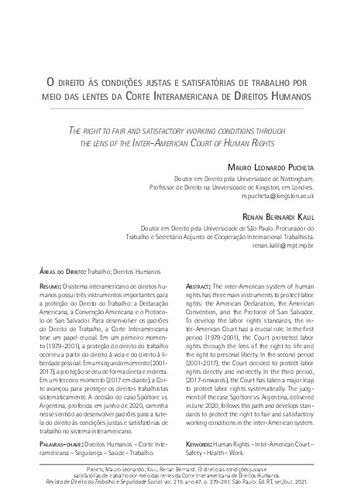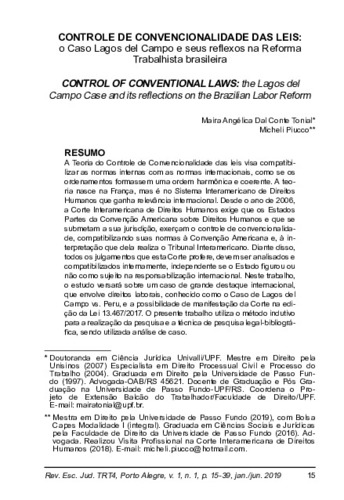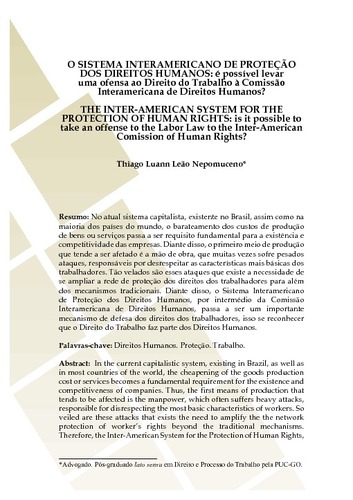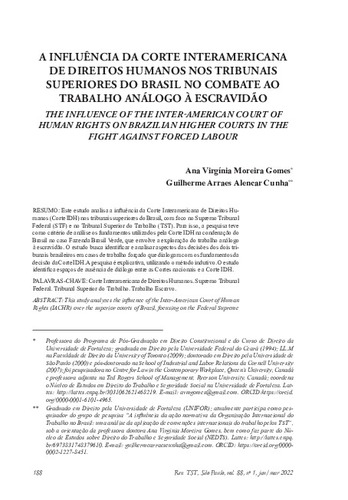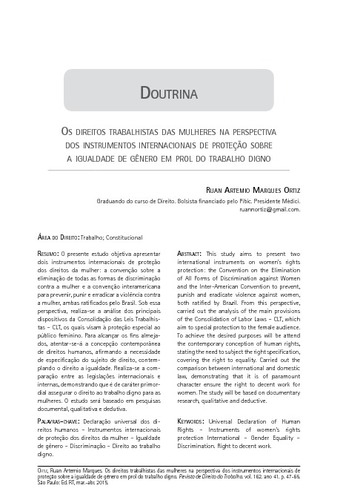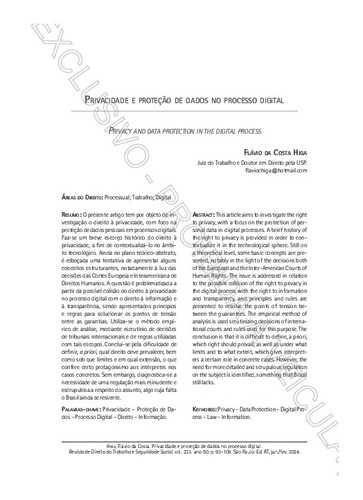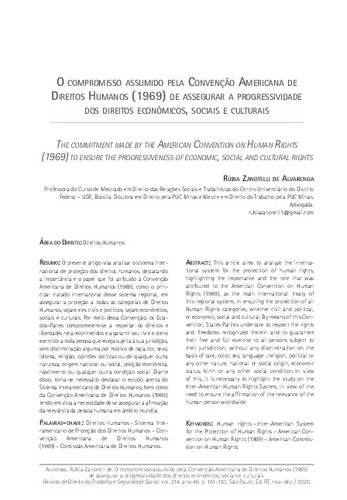Artigo de periódico
O direito às condições justas e satisfatórias de trabalho por meio das lentes da Corte Interamericana de Direitos Humanos
| dc.contributor.author | Pucheta, Mauro Leonardo | |
| dc.contributor.author | Kalil, Renan Bernardi | |
| dc.date.accessioned | 2021-10-07T18:34:04Z | |
| dc.date.available | 2021-10-07T18:34:04Z | |
| dc.date.issued | 2021-10 | |
| dc.identifier.citation | PUCHETA, Mauro Leonardo; KALIL, Renan Bernardi. O direito às condições justas e satisfatórias de trabalho por meio das lentes da Corte Interamericana de Direitos Humanos = The right to fair and satisfactory working conditions through the lens of the Inter-American Court of Human Rights. Revista de direito do trabalho e seguridade social, São Paulo, v. 47, n. 219, p. 279-291, set./out. 2021. | pt_BR |
| dc.identifier.uri | https://hdl.handle.net/20.500.12178/192711 | |
| dc.description.abstract | [por] O sistema interamericano de direitos humanos possui três instrumentos importantes para a proteção do Direito do Trabalho: a Declaração Americana, a Convenção Americana e o Protocolo de San Salvador. Para desenvolver os padrões do Direito do Trabalho, a Corte Interamericana teve um papel crucial. Em um primeiro momento (1979-2001), a proteção do direito do trabalho ocorreu a partir do direito à vida e do direito à liberdade pessoal. Em um segundo momento (2001- 2017), a proteção se deu de forma direta e indireta. Em um terceiro momento (2017 em diante), a Corte avançou para proteger os direitos trabalhistas sistematicamente. A decisão do caso Spoltore vs. Argentina, proferida em junho de 2020, caminha nesse sentido ao desenvolver padrões para a tutela do direito às condições justas e satisfatórias de trabalho no sistema interamericano. | pt_BR |
| dc.description.abstract | [eng] The inter-american system of human rights has three main instruments to protect labor rights: the American Declaration, the American Convention, and the Protocol of San Salvador. To develop the labor rights standards, the inter- American Court had a crucial role. In the first period (1979-2001), the Court protected labor rights through the lens of the right to life and the right to personal liberty. In the second period (2001-2017), the Court decided to protect labor rights directly and indirectly. In the third period, (2017-onwards), the Court has taken a major leap to protect labor rights systematically. The judgment of the case Spoltore vs. Argentina, delivered in June 2020, follows this path and develops standards to protect the right to fair and satisfactory working conditions in the inter-american system. | pt_BR |
| dc.description.tableofcontents | Os direitos trabalhistas no sistema interamericano -- O direito a condições justas e equitativas de trabalho | pt_BR |
| dc.language.iso | pt_BR | pt_BR |
| dc.relation.ispartof | Revista de direito do trabalho e seguridade social: vol. 47, n. 219 (set./out. 2021) | pt_BR |
| dc.subject | Corte Interamericana de Direitos Humanos | pt_BR |
| dc.subject | Convenção Americana sobre Direitos Humanos (1969) | pt_BR |
| dc.subject | Direitos dos trabalhadores, proteção, América Latina | pt_BR |
| dc.subject | Condições de trabalho, América Latina | pt_BR |
| dc.subject | Saúde do trabalhador, proteção, América Latina | pt_BR |
| dc.title | O direito às condições justas e satisfatórias de trabalho por meio das lentes da Corte Interamericana de Direitos Humanos | pt_BR |
| dc.title.alternative | The right to fair and satisfactory working conditions through the lens of the Inter-American Court of Human Rights | pt_BR |
| dc.type.genre | Artigo de periódico | pt_BR |
| dc.identifier.rvbisys | 001204557 | |
| dc.relation.ispartoflink | https://hdl.handle.net/20.500.12178/192417 | pt_BR |
This item appears in the following Collection(s)
-
Artigos9527


